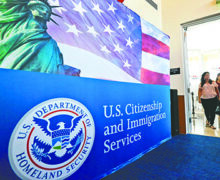“Mexicans aren’t White; Mexicans are White”
Once again the almost four hundred year deep divide separating white and black Americans has shaken the American experience in a St. Louis suburb, Ferguson, Missouri.
Watching a “militarized” local police department flunk the ultimate street test was a befuddled governor, President and Attorney General of the United States. Joining them were Congress people John Lewis, 1960s Civil Rights fighter, who demands “martial law” in Ferguson and St. Louis native Maxine Waters who labeled the criminal 1992 Los Angeles black riots and terrorist arson bombings as a black “rebellion.”
Standing back were the 54 million plus Hispanics of the country that have sporadically experienced official discrimination and police brutality. Though not at a level experienced by blacks they have been beaten with police truncheons, carted away in “paddy” wagons for “driving on a Sunday afternoon” and, in some cases, loaded onto railroad cattle cars and mass deported across the Mexican border; some deportees were U.S. citizens.
Experiences of the black and Hispanic groups are sometimes shared.
School segregation in South and Midwest lasted until the 1960s when it was ended in principle by the “Brown vs. Topeka Board of Education” unanimous decision of the Earl Warren Supreme Court in 1954. Much attention is given to this Supreme Court decision and it is well deserved. School segregation also bedeviled Mexican Americans in California; it ended in 1946.
For Hispanics an equally important U.S. Supreme Court (SCOTUS) decision was made a few months earlier than “Brown.” The case: Hernandez v. State of Texas, 347 U.S. 475, 1954.
Mexican American Pete Hernandez was a 21-year-old farm worker in Texas charged and convicted of murder and sentenced to life in prison. SCOTUS had not yet ruled that defendants were entitled to lawyers even at public expense (Gideon v. Wainright), thus it was a miracle that Mexican American lawyers (Gus Garcia, James de Anda, Chris Aldrete, Carlos Cardera and John Herrera) funded by various Mexican American civil rights groups challenged the State of Texas on his behalf.
They claimed that Texas systematically excluded Mexican Americans from grand and trial (petit) juries and that violated the Constitution’s 14th Amendment’s “equal protection” guarantee. Their precedent– 1942’s Hill v. Texas decision (316 U.S. 400) in which a black defendant quashed a grand jury indictment because Texas systematically excluded blacks from grand juries.
The trial judge ruled against Hernandez and he was convicted in 4 hours by an all “Anglo” jury. Surprise! The conviction was upheld by the Texas Court of Appeals. The case moved directly to the Earl Warren Supreme Court. It ruled unanimously to overturn the conviction.
The court decided that Texas was wrong in claiming the 14th Amendment only applied to whites and blacks and that Mexican Americans were white. Thus, as the jury was white there was no discrimination. Previously, the State of Texas argued before SCOTUS that Mexicans weren’t white.
Texas stipulated that not one Mexican American (by name) had served on any jury in Jackson County in at least 25 years. That was proof that Mexican Americans were treated as a “class” of people separate of race; thus were not treated equally. Hernandez v. Texas stood as a monumental civil rights case until “Cisneros v. Corpus Christi (1971)” when the court ruled Mexican Americans a specific “identifiable minority group.”
There were few of what we call Hispanics in the country through the 70s, thus “Hernandez” and later “Cisneros” were vital in American civil rights law. Mexican Americans were and are a majority of “Hispanics” (67% of the total Hispanic population).
Throughout this legal epoch (Hernandez, 1954, through “Cisneros,” 1971, through the toss-out of intensely anti-Hispanic immigrant laws in recent years in Arizona -SB 1070- Alabama, Georgia and Texas), Mexican Americans have made their challenges in the courts and won. Street riots are rejected by Mexican Americans.
In recent years 400,000 mostly Mexican-origin people demonstrated for immigration reform on the streets of Los Angeles with no riots, no rock and bottle throwing and no arrests. One disturbance that can be called a riot in Los Angeles involving Hispanics was a rabid police riot in McArthur Park. There are, shamefully, the Salvadoran and Guatemalan refugees who looted in the 1992 LA Riots in which 54 people were murdered. They are the exception.
Ferguson, Missouri, with two thirds of it black yet with only one black police officer per 17, rabidly false rumors, street demonstrations and looting the media showed us night after night, is not a happy place.
Without any facts Jesse Jackson called the Ferguson spark a “state execution” of a black 18 year old “man-boy” by a white police officer. Congressman John Lewis (D) calls for “martial law.” Democrat Black politicians insist an elected Democrat white prosecutor can’t prosecute the case fairly. Missouri Democrat Governor Jay Nixon calls for a “vigorous prosecution” and the President calls for justice for the victim’s family, not just for justice.
Three hundred ninety five years and counting…
Contreras formerly wrote for the New American News Service of the New York Times

























